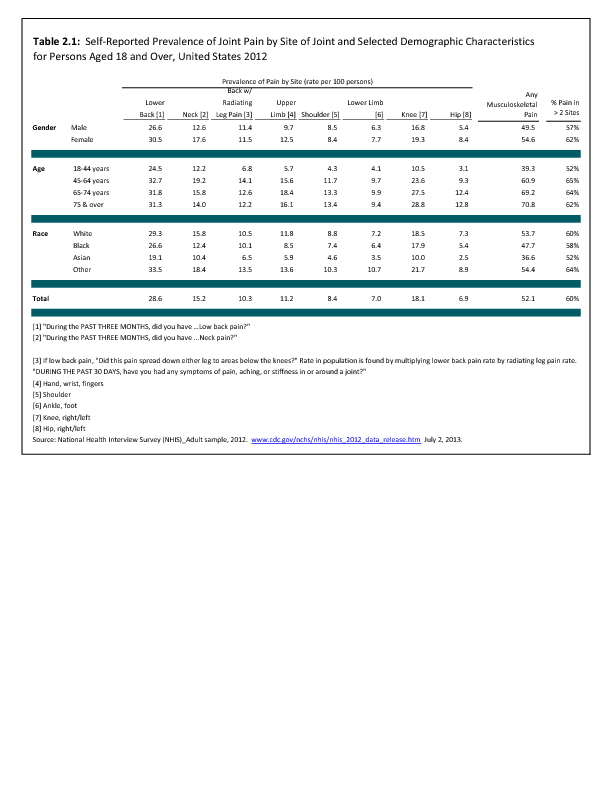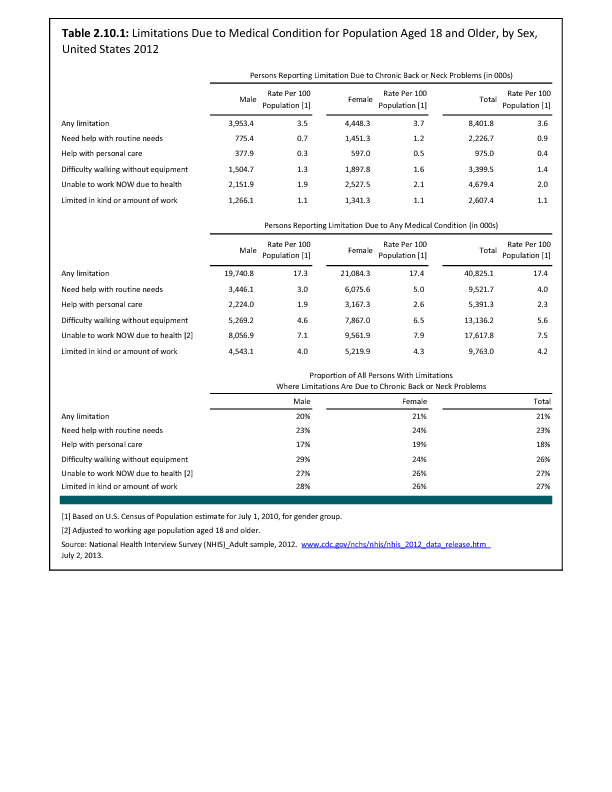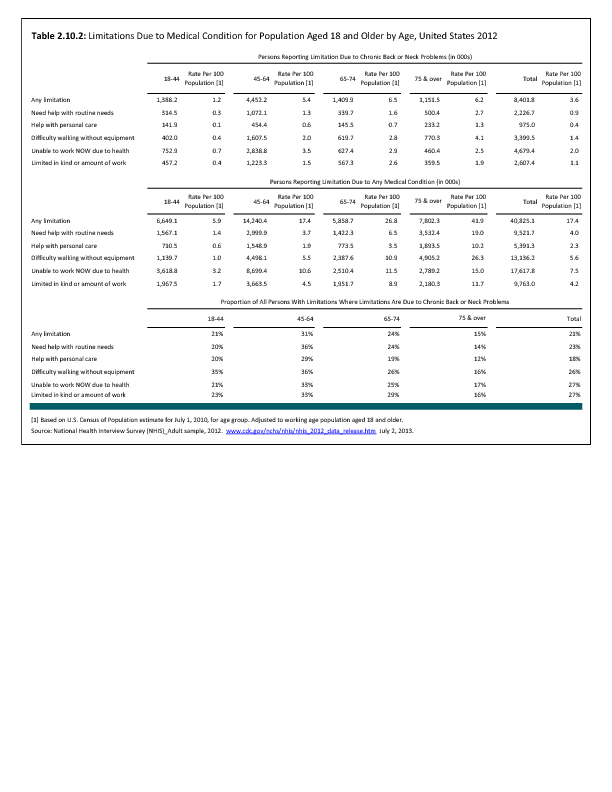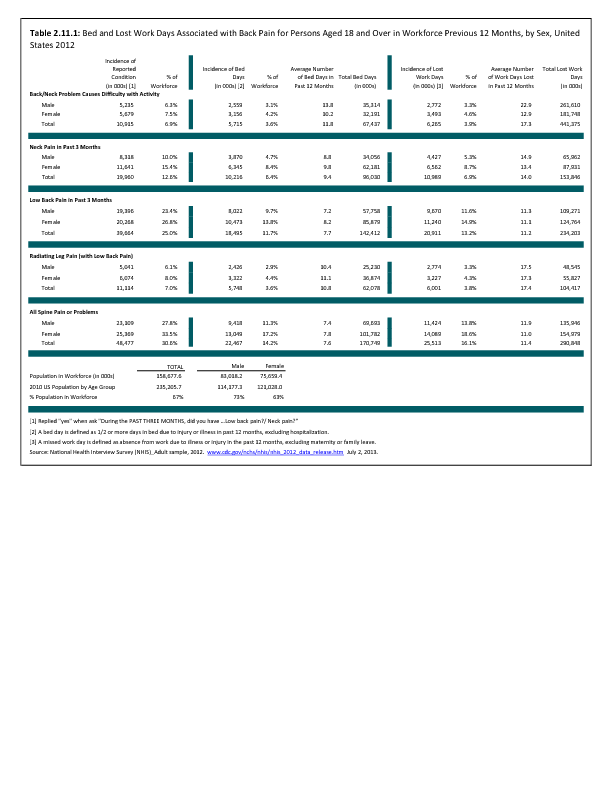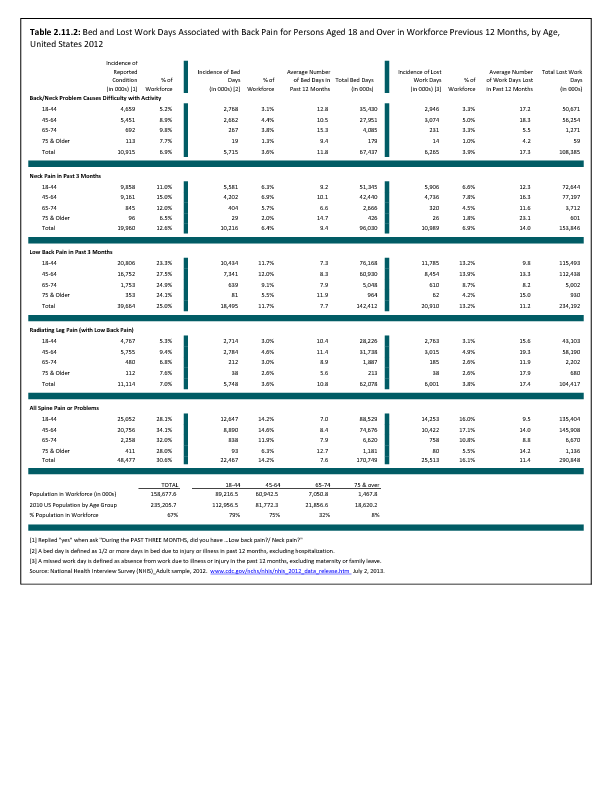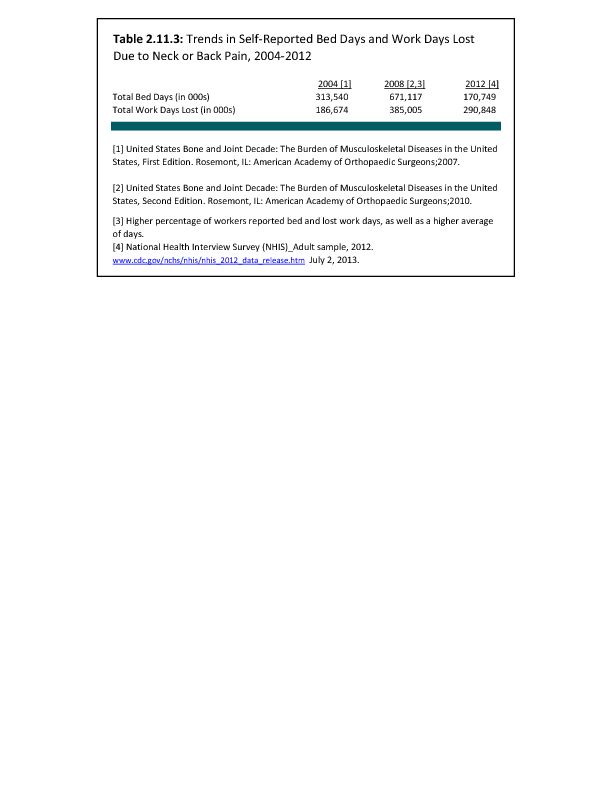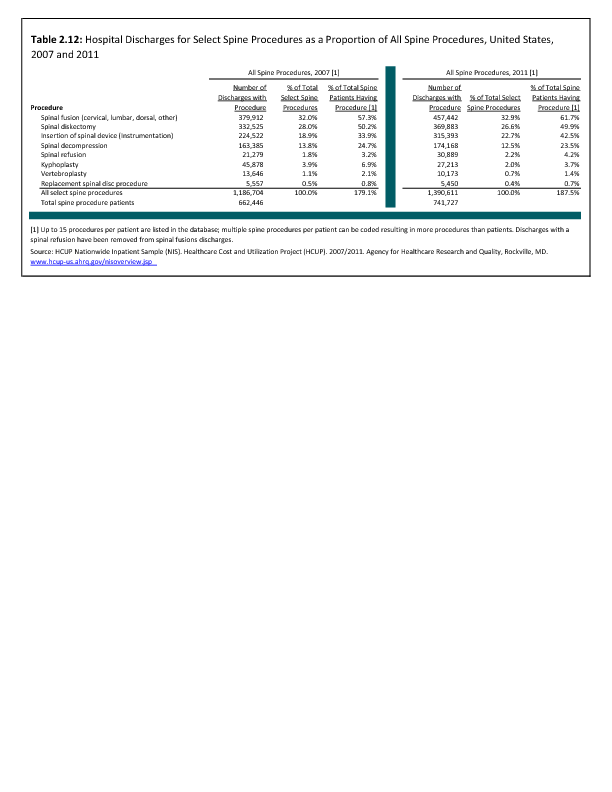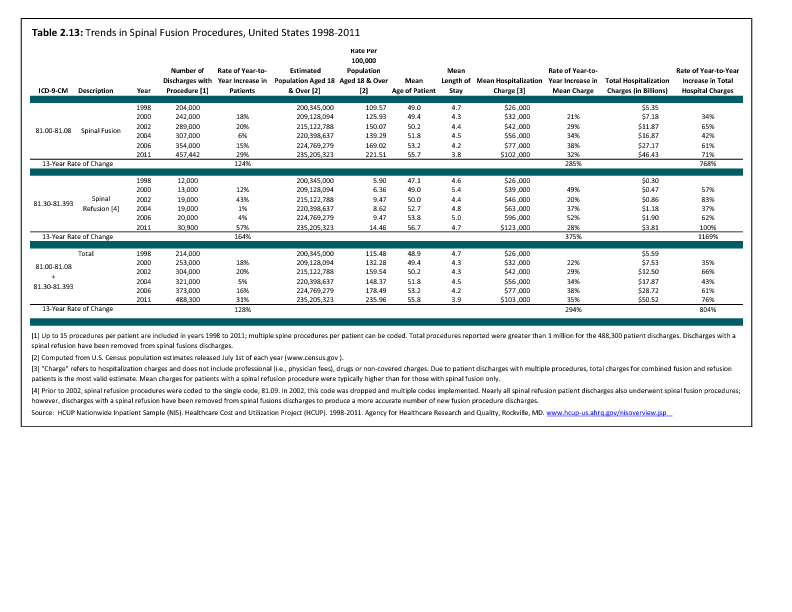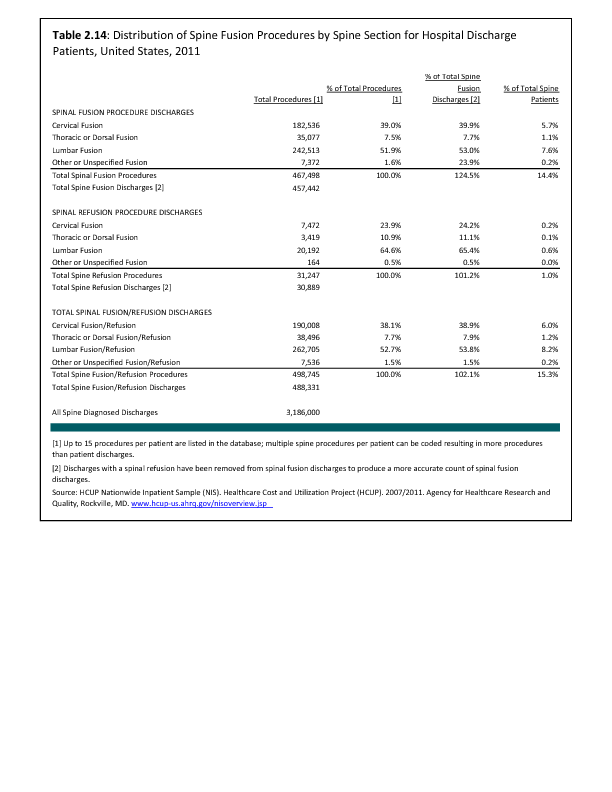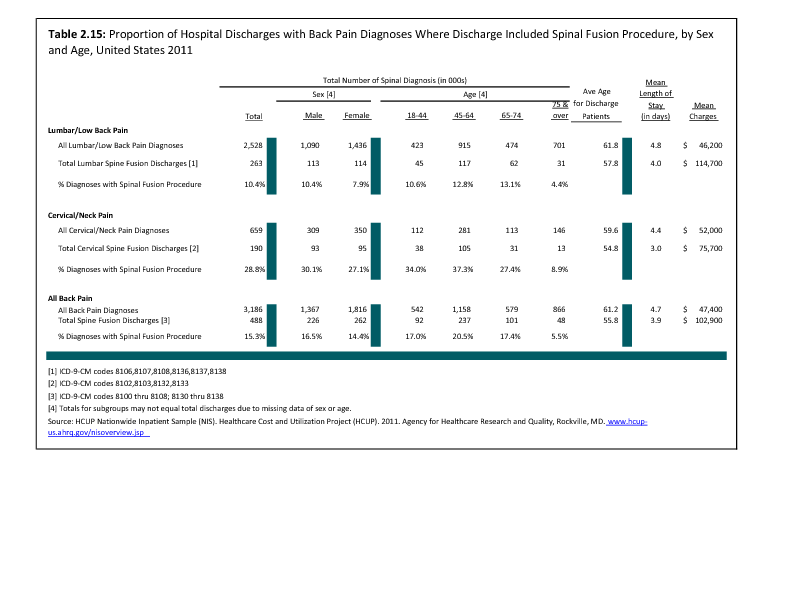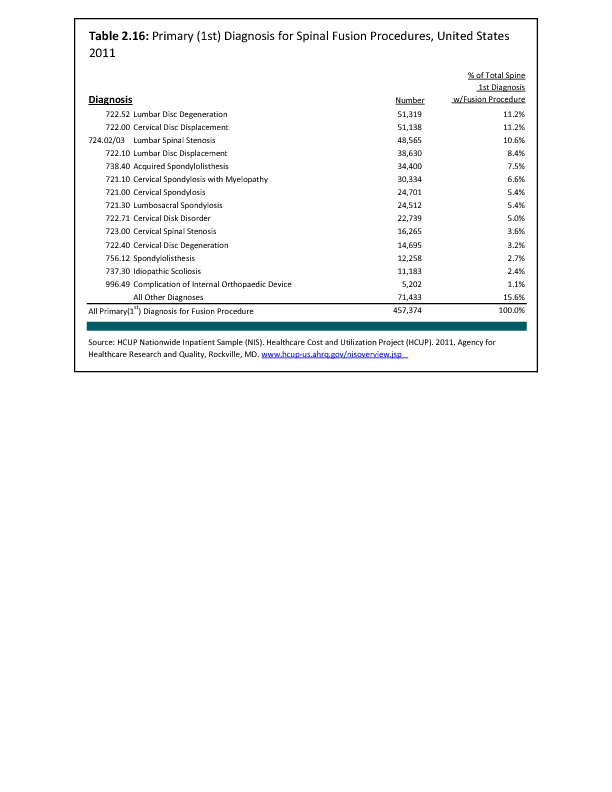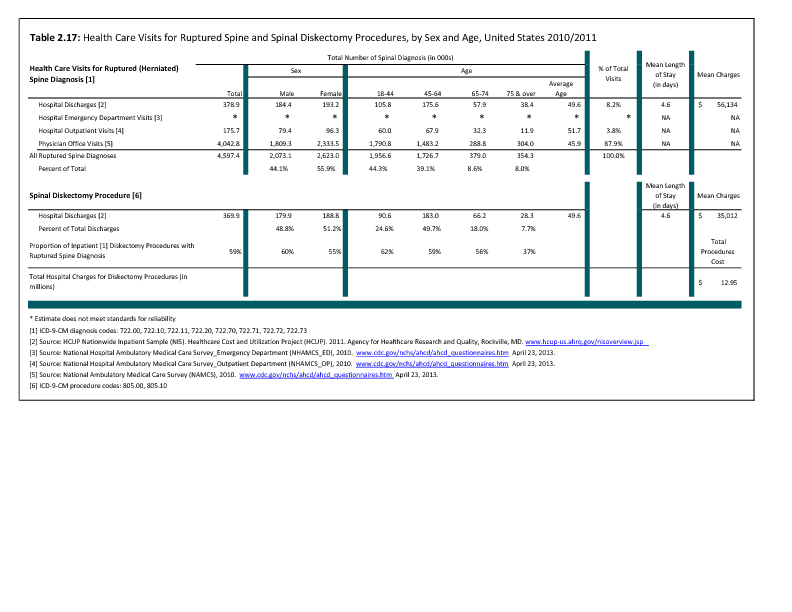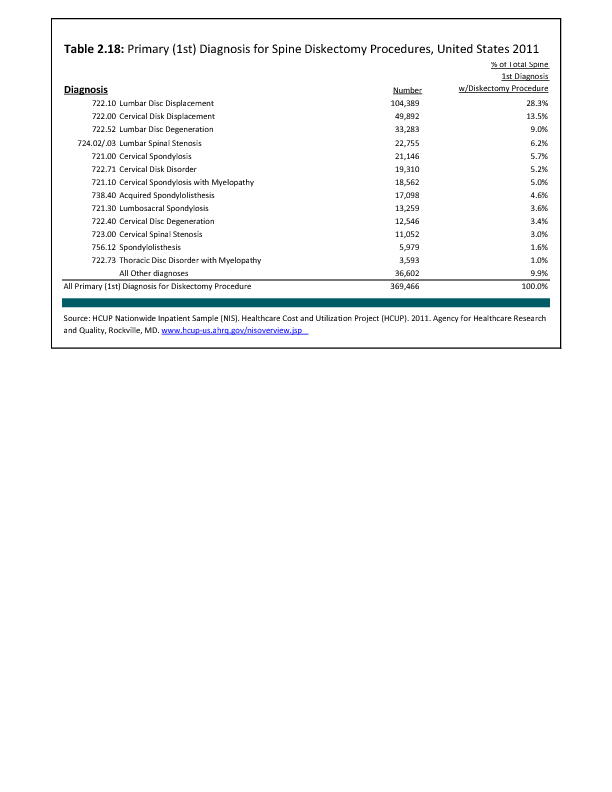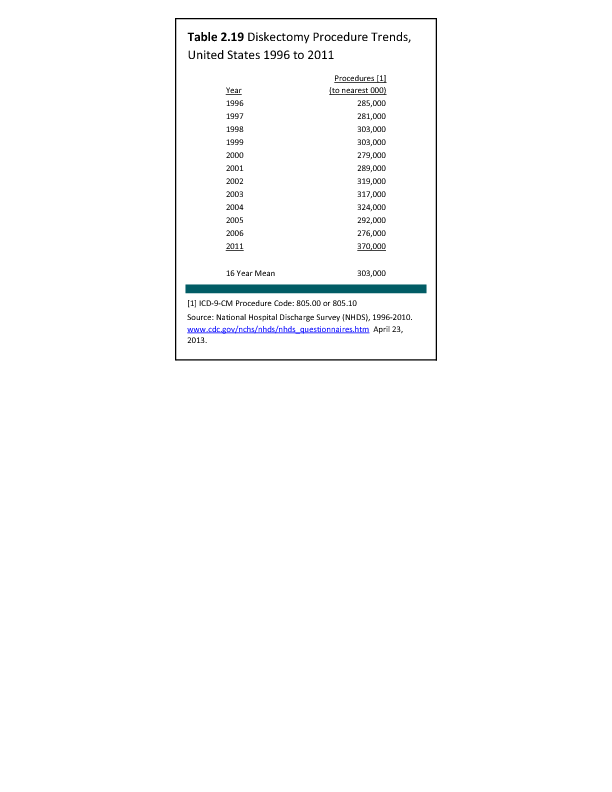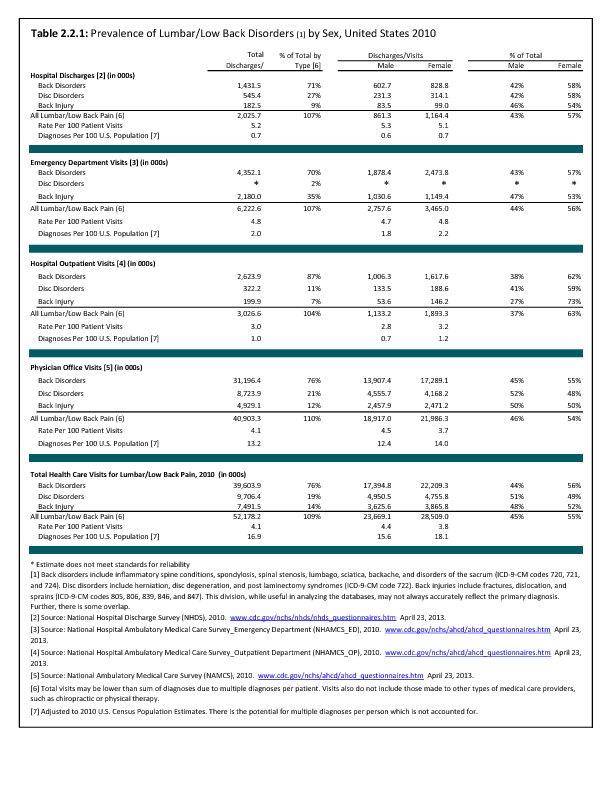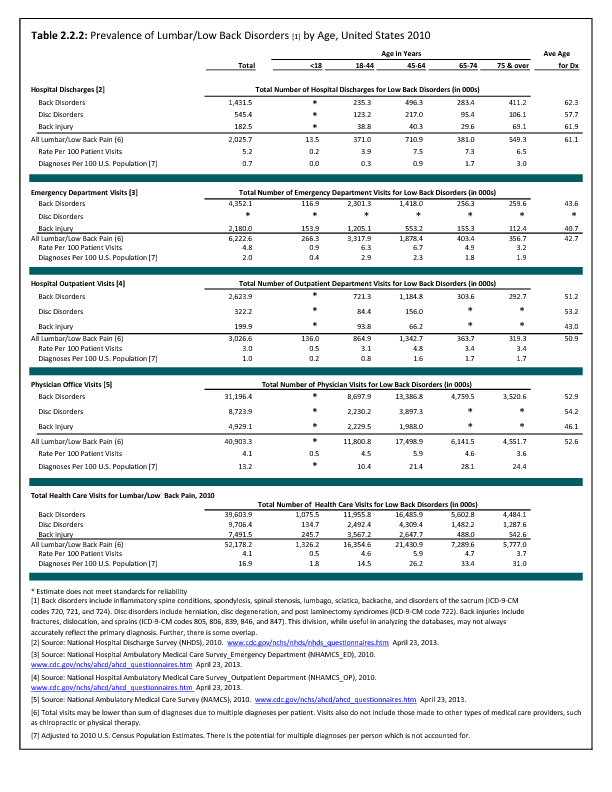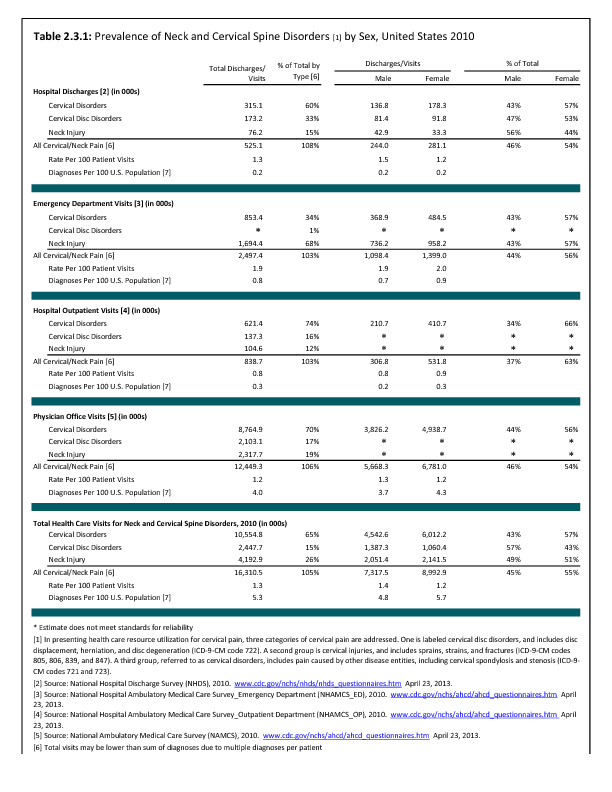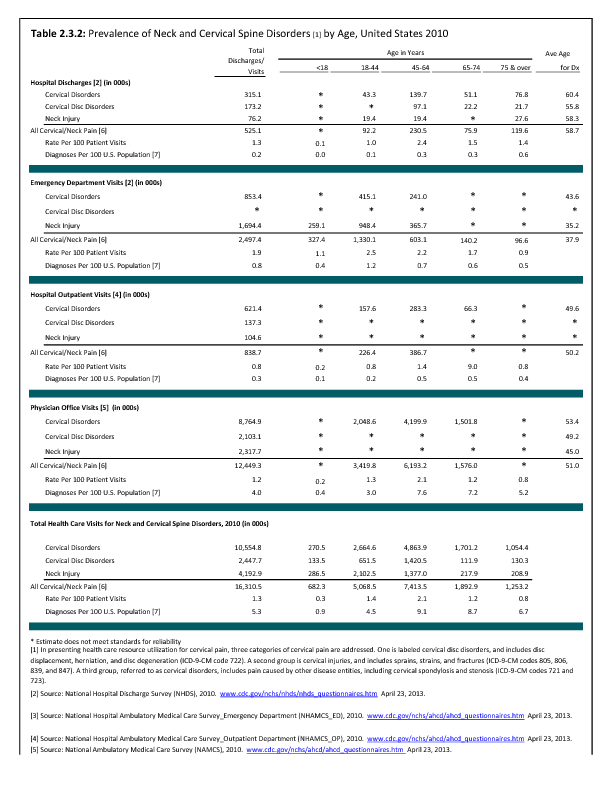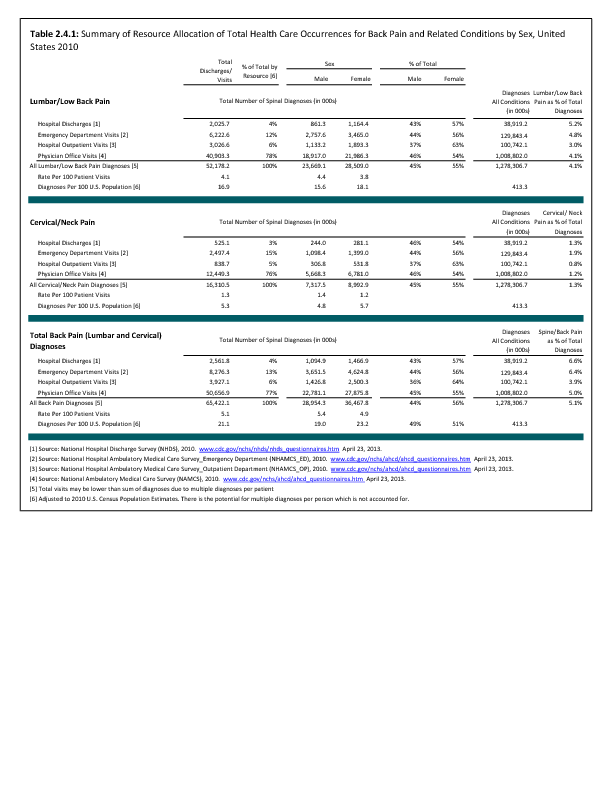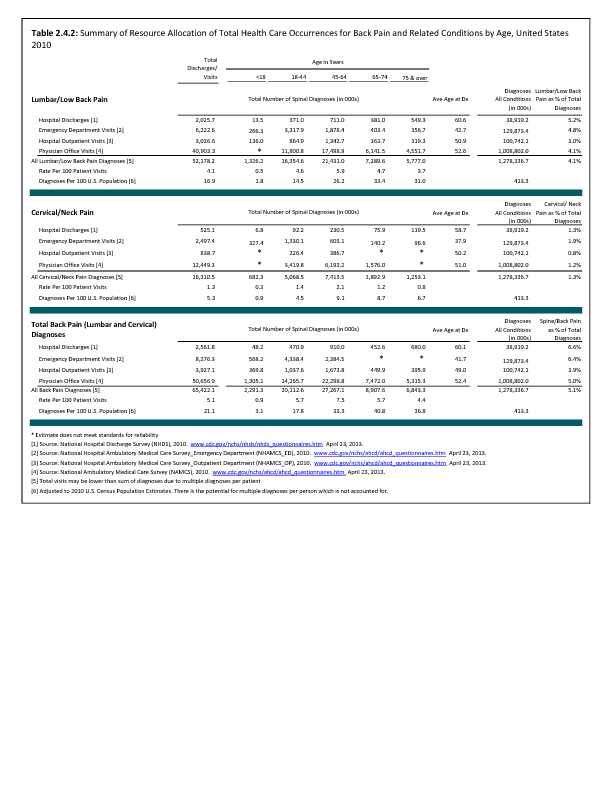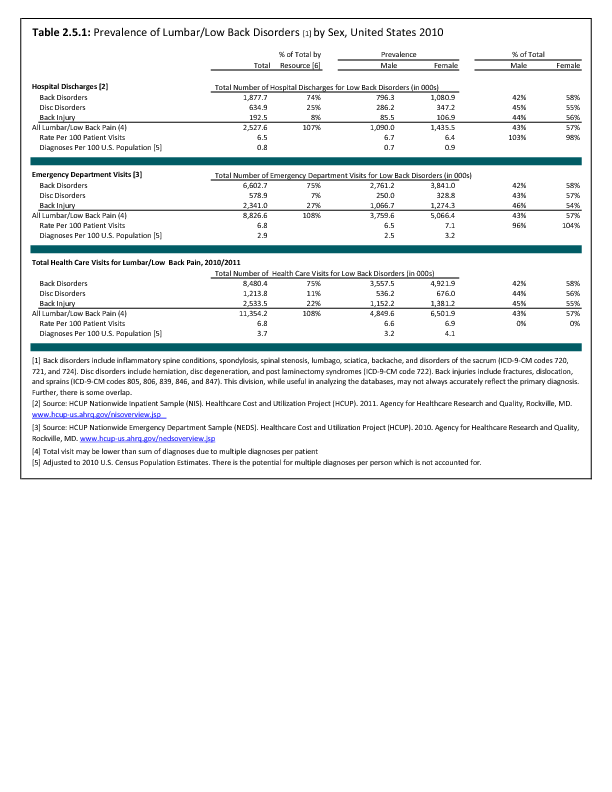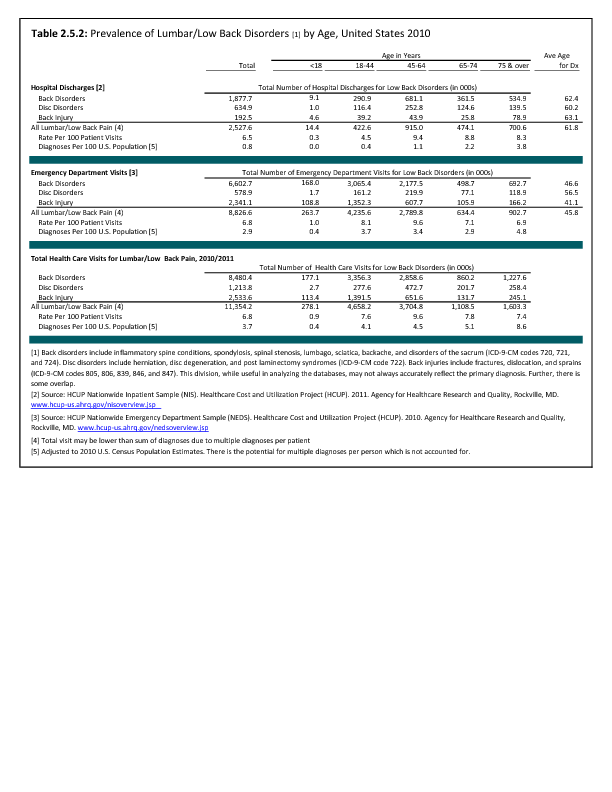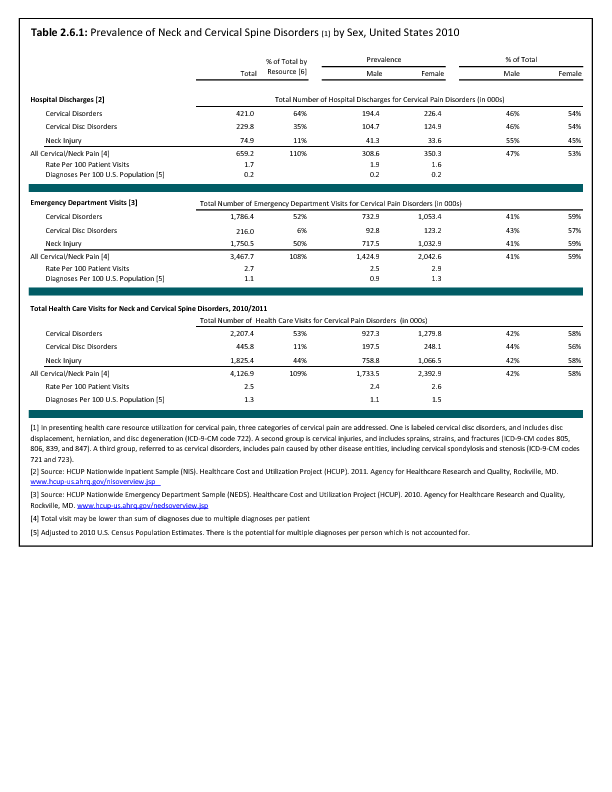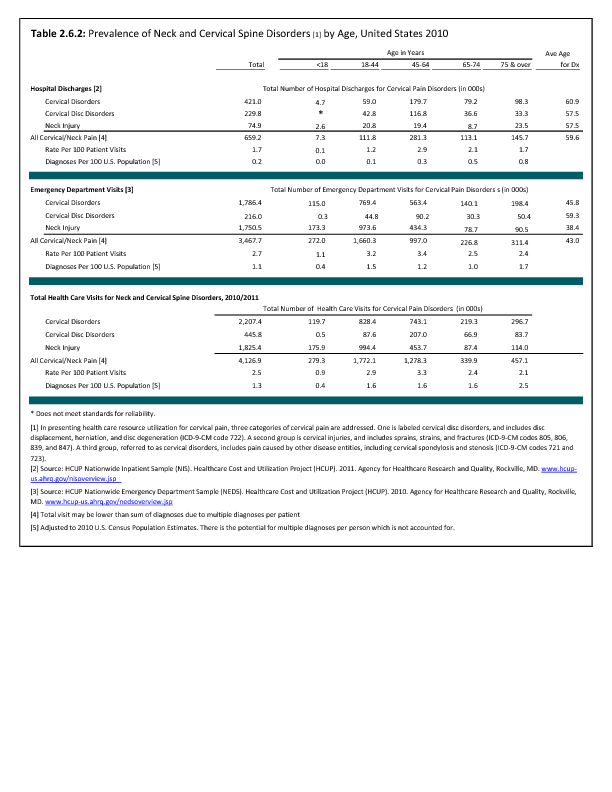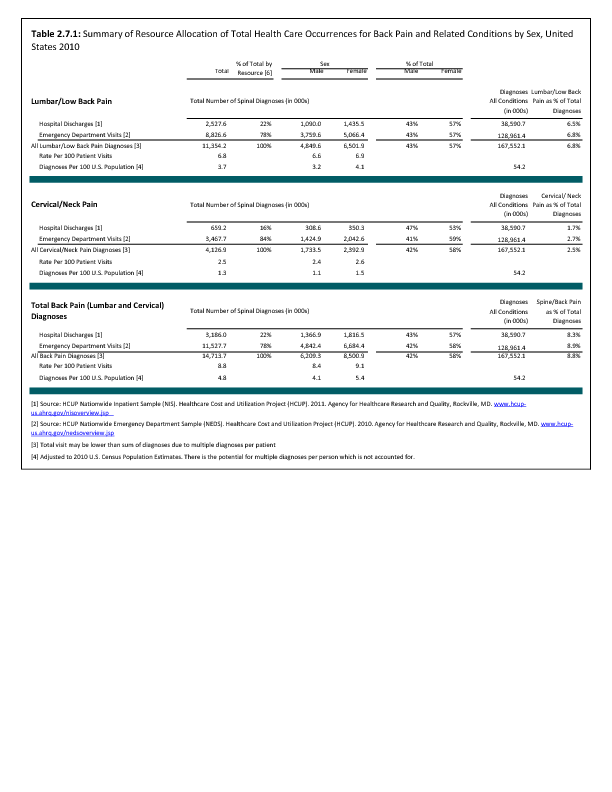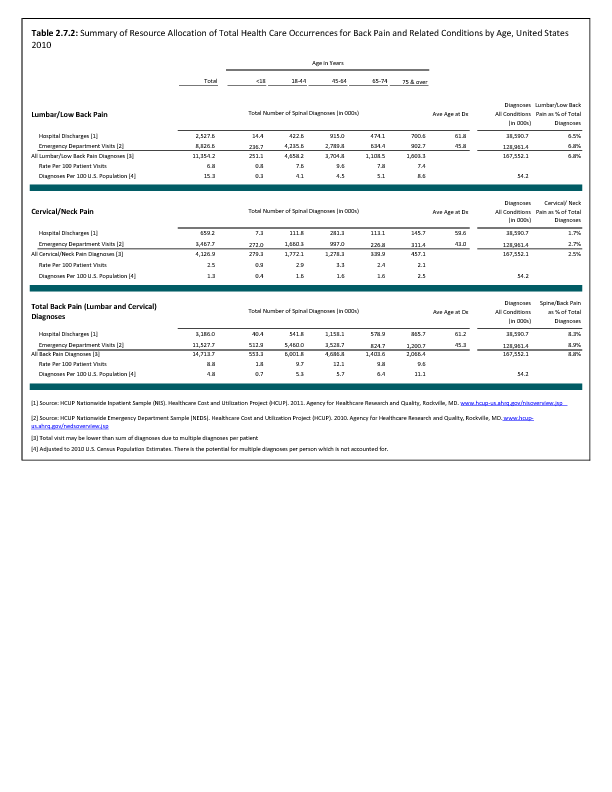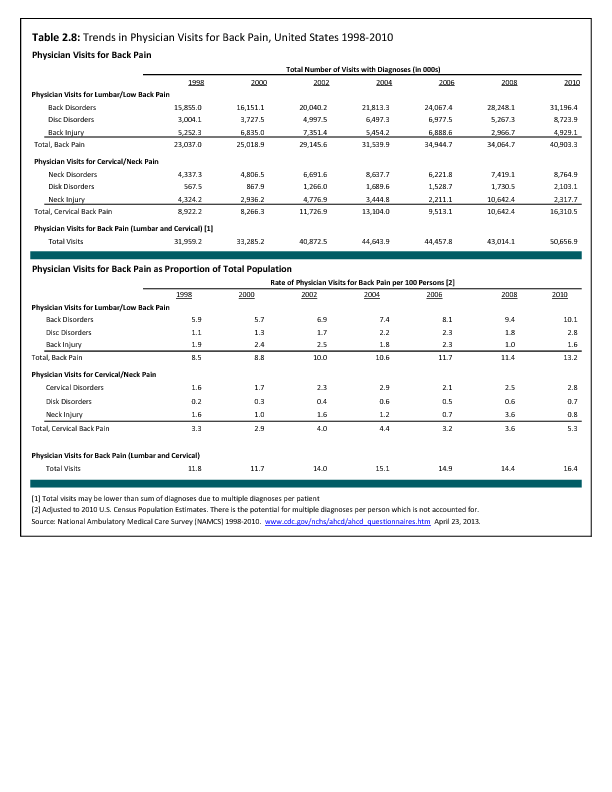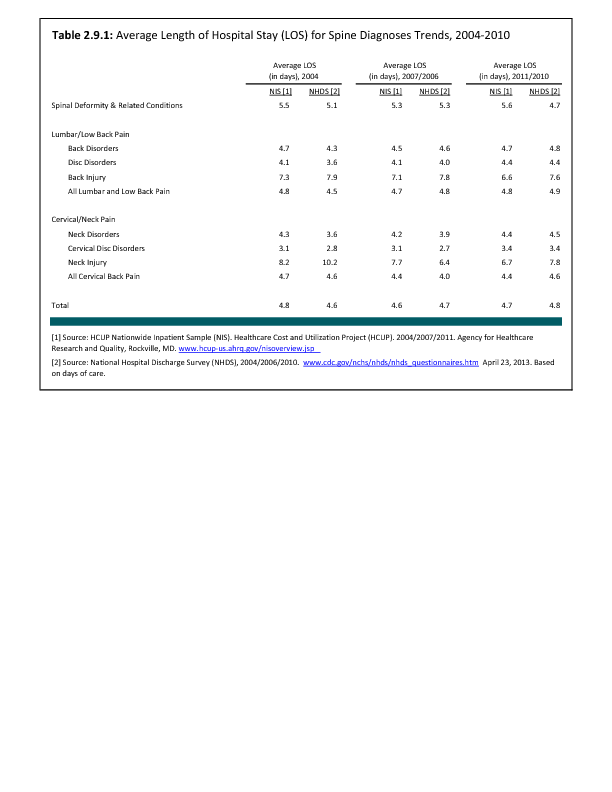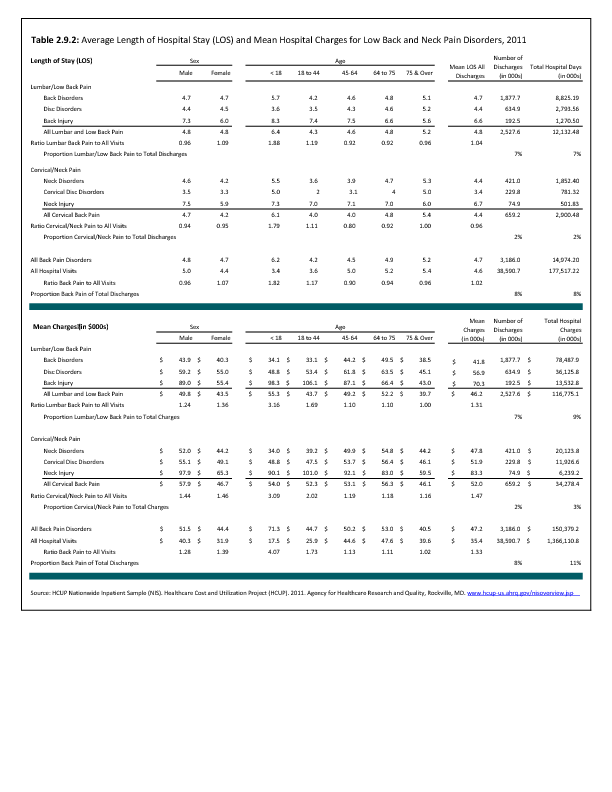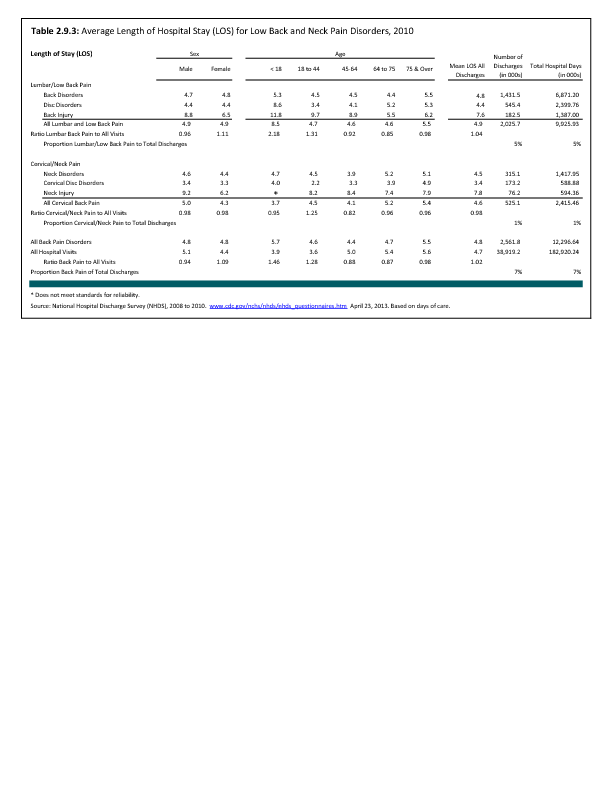Lumbar/low back pain and cervical/neck pain are among the most common medical conditions requiring medical care and affecting an individual’s ability to work and manage the daily activities of life. Back pain is the most common physical condition for which patients visit their doctor. In any given year, between 12% and 14.0% of the United States’ adult population (above 18 years of age) will visit their physician with complaints of back pain. In addition, an unknown, but very high number will visit a chiropractor or physical therapist for these complaints. The number of physician visits has increased steadily over the years. In 2012, more than 52.3 million patients visited a physician with a complaint of back pain, compared to 44.6 million in 2004.1
A large annual health care survey is conducted in the United States by the National Center for Health Statistics for the purpose of identifying the incidence and prevalence of select health conditions. Pain from any muscle, joint, or bone (musculoskeletal pain) was reported by 52.1% of persons aged 18 years and older in 2012. Low back pain was the most common, affecting 28.6%; neck pain was the third most common at 15.2%. (Knee pain was second at 18.1%.) The prevalence of back pain has remained stable since 2005, and is measured in response to the question of whether the individual “had low back pain or neck pain during the past three months.” Females report musculoskeletal pain more frequently than males (54.6% vs. 49.5%). The prevalence of low back pain and neck pain is highest for persons age 45 to 64 years, while overall, joint paint is highest among persons age 65 years and older, where 7 in 10 report joint pain. (Reference Table 2.1 PDF CSV)
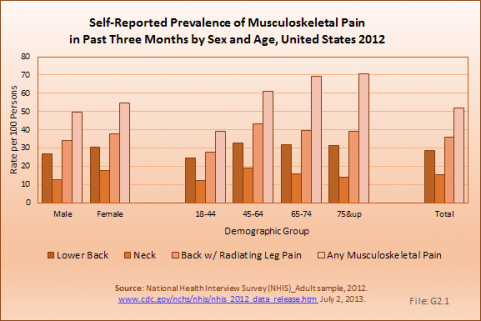
About 1 in 13 persons (7.5%) in the population age 18 or older report they have a physical, mental, or emotional problem or illness that precludes work. Among these persons, 27%, or nearly 4 of the 13, are unable to work due to chronic back or neck problems. Another 1 out of 25 persons is limited in the type and duration of work they can do because of back and neck pain. Three in four persons with pain in multiple areas of the back and neck report work limitations. (Reference Table 2.10.1 PDF CSV)
The estimated annual direct medical cost for all back related conditions was $253 billion in 2012. This is further discussed under the Economic Burden topic in this Spine section, and in the Economic Cost topic at this site. As discussed elsewhere, this is not the true cost because chiropractic care, physical therapy, massage therapy, and other types of alternative care are not included in the analysis. Also, outpatient treatment cost from outpatient clinics is currently not collected; hence, this data is missing or incomplete.
Back pain often originates from sources that are not readily identifiable. Many causes of back pain are likely related to degeneration, but the actual underlying cause of a given back pain episode is often uncertain. In reviewing administrative data for prevalence, it is important to realize that the diagnostic categories may be inaccurate because they reflect differing interpretations about the source of the back problem rather than an absolute diagnosis. This will be discussed further in later sections.
- 1. United States Bone and Joint Decade: The Burden of Musculoskeletal Diseases in the United States, First Edition. Rosemont, IL, American Academy of Orthopaedic Surgeons, 2008, p. 42.
Edition:
- 2014

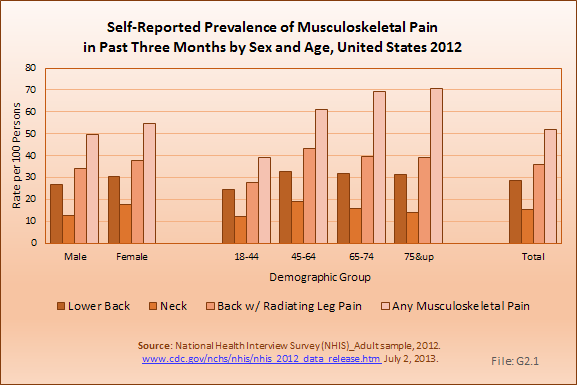
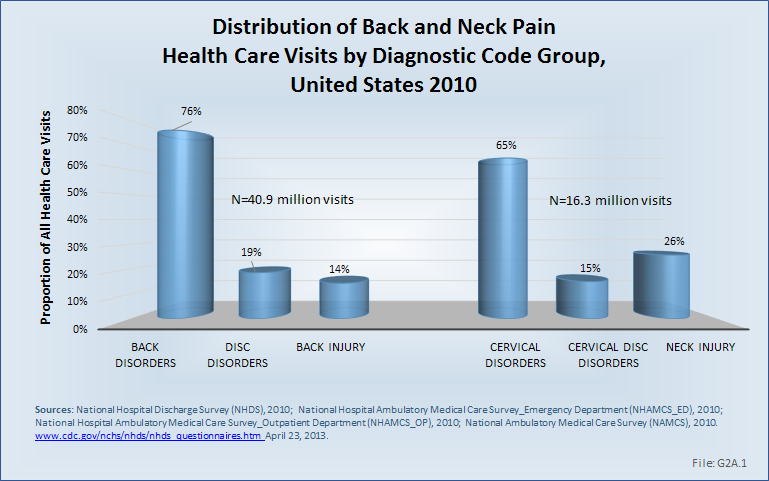
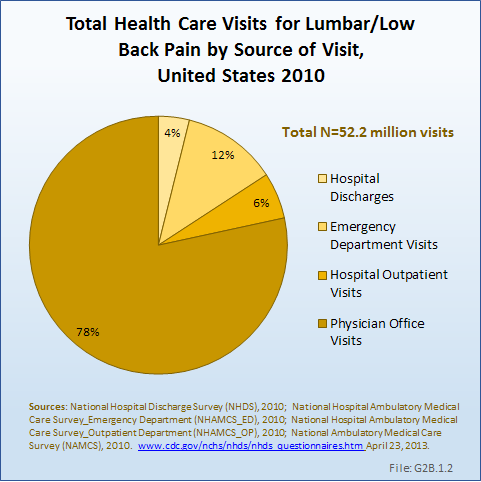
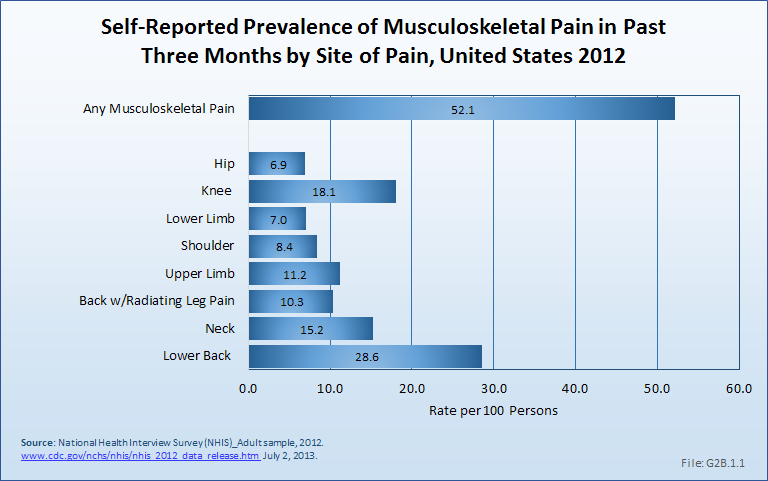
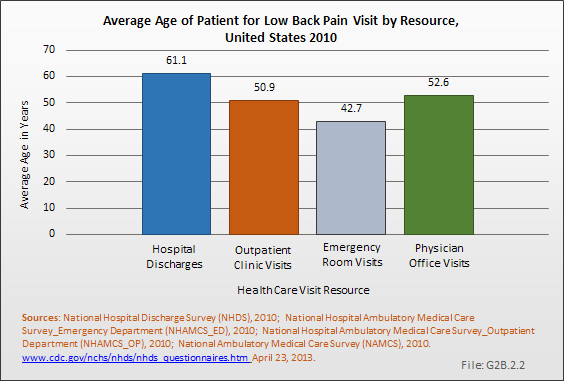
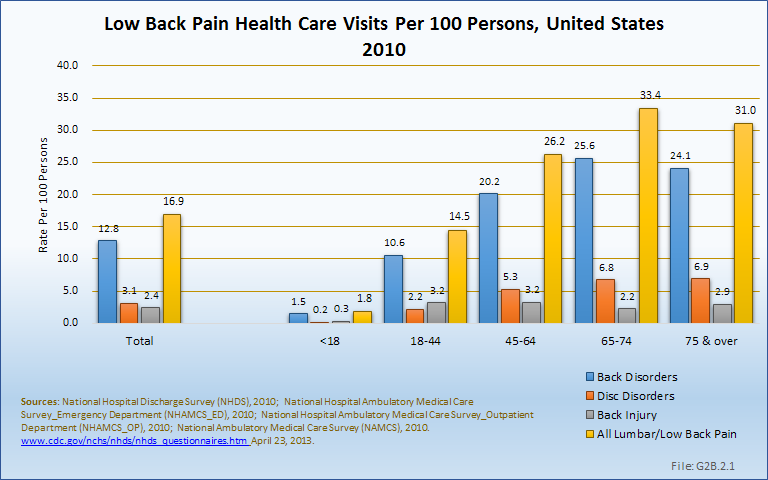
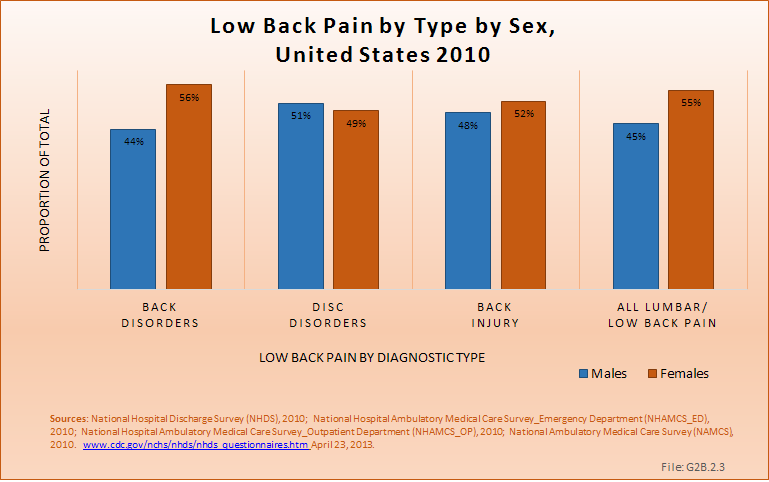
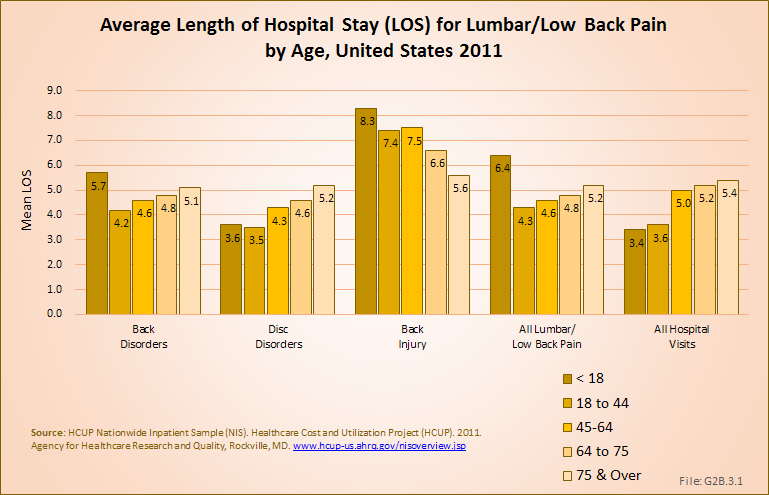
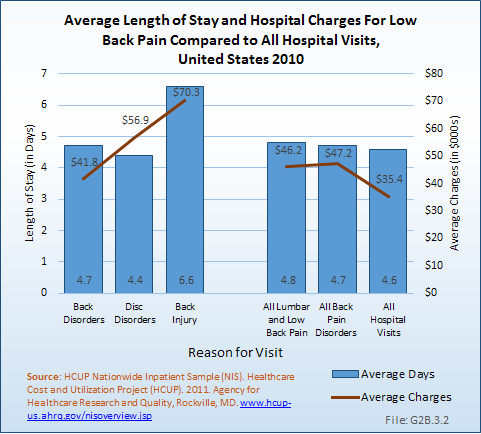
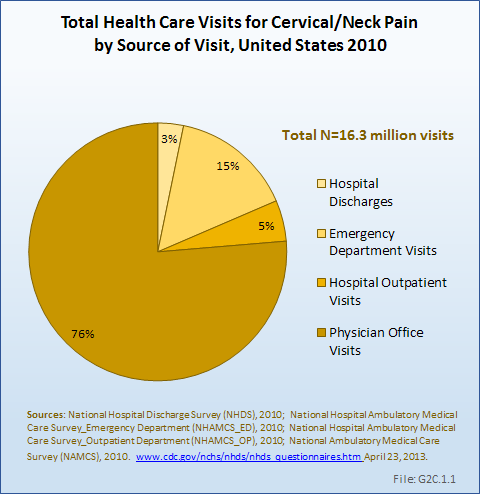
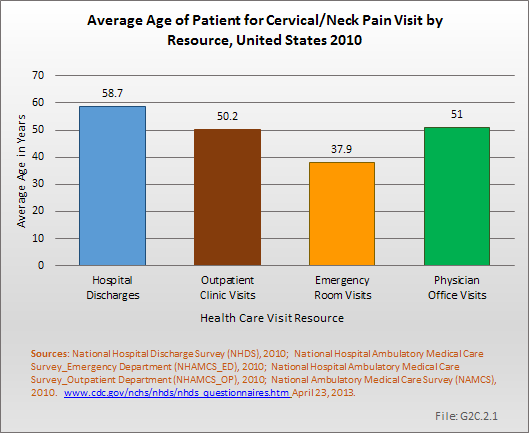
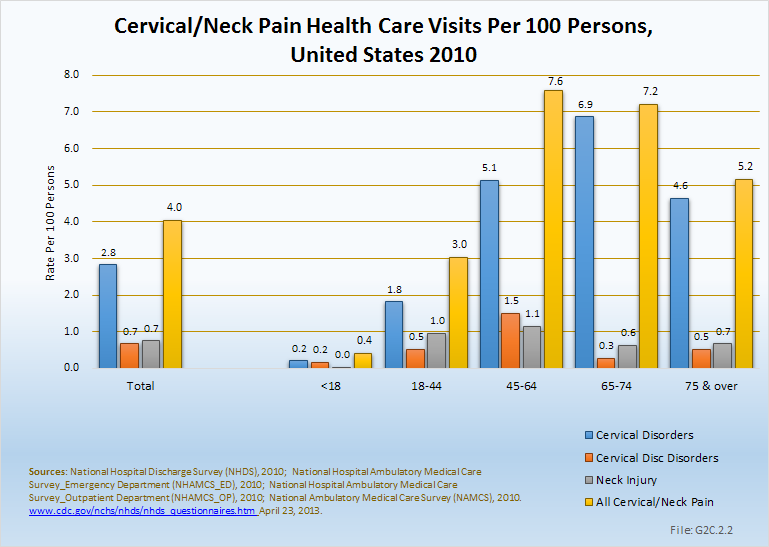
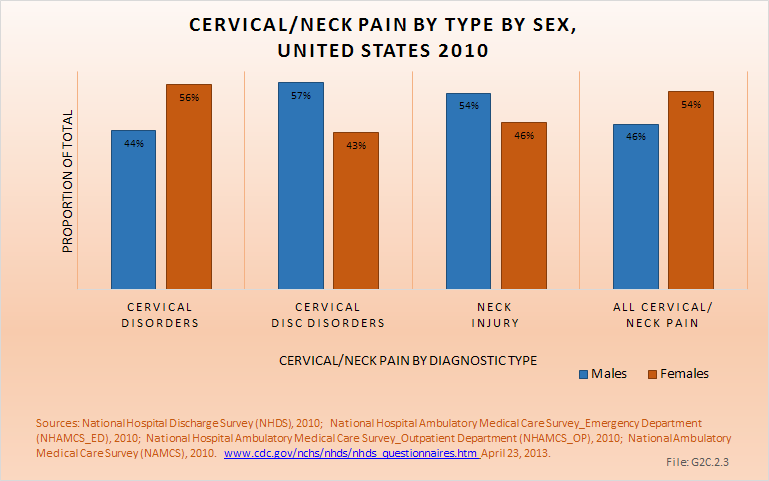
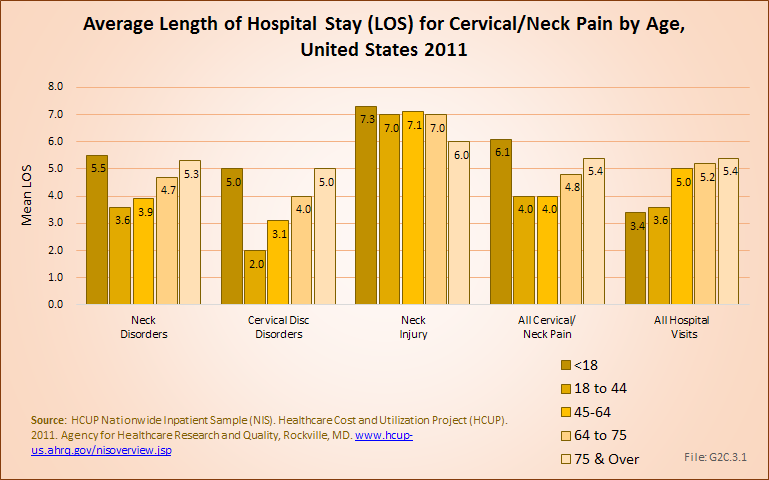

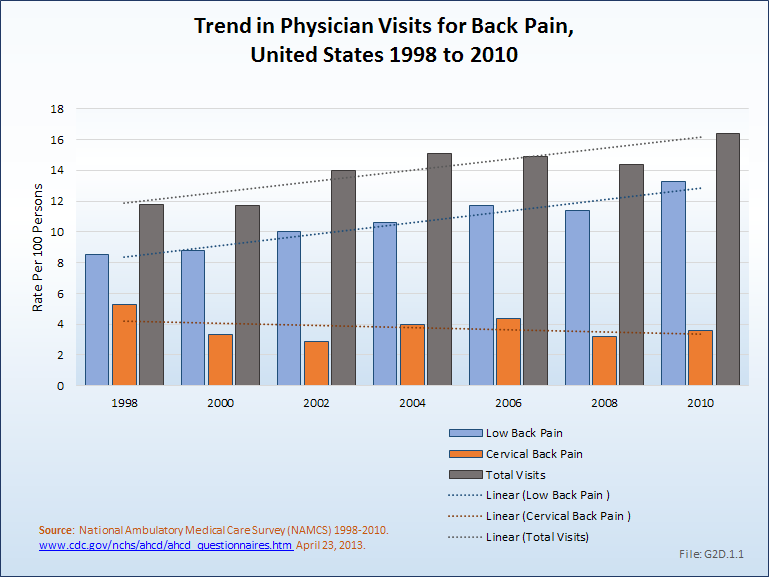
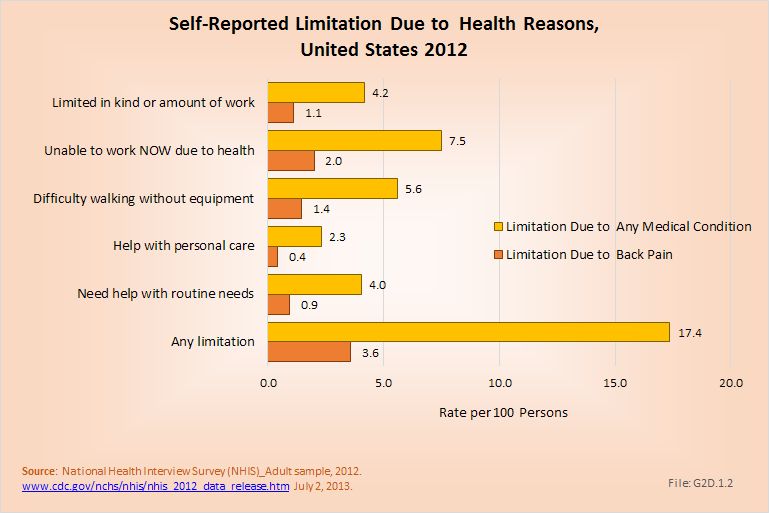
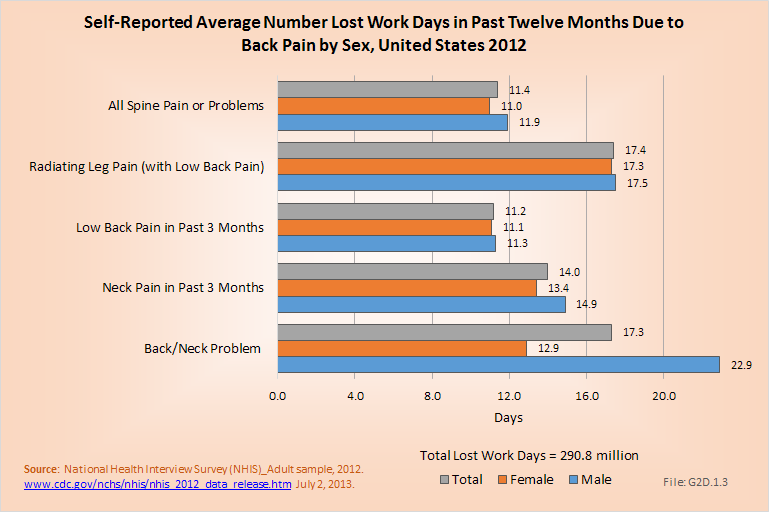
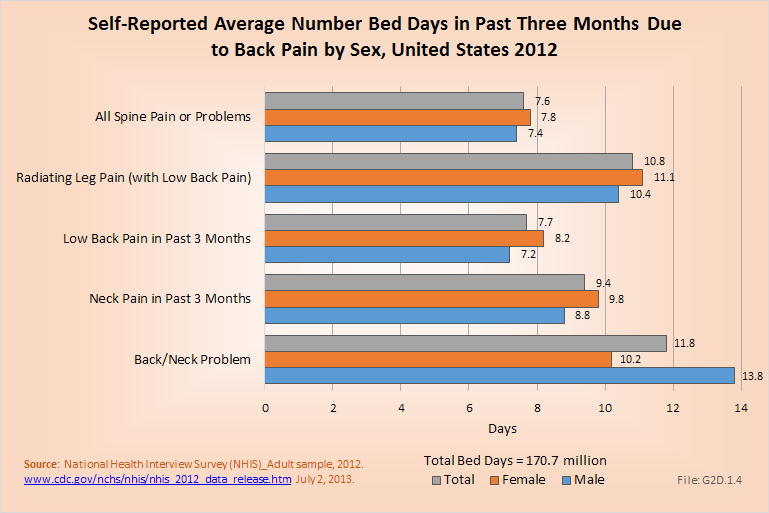
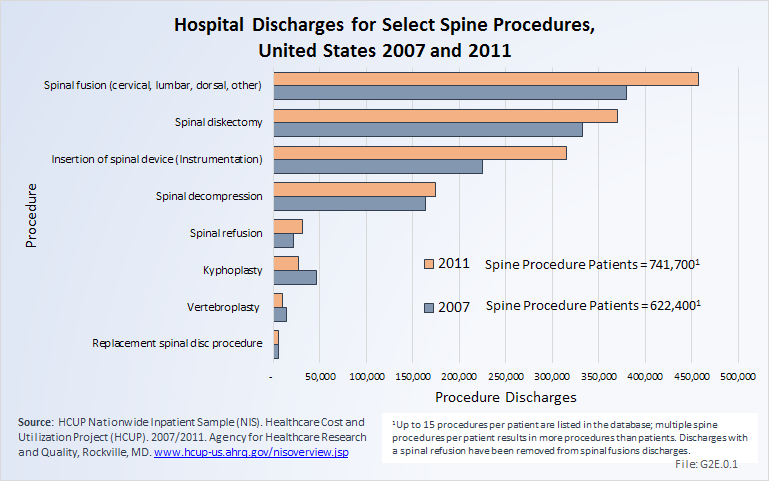
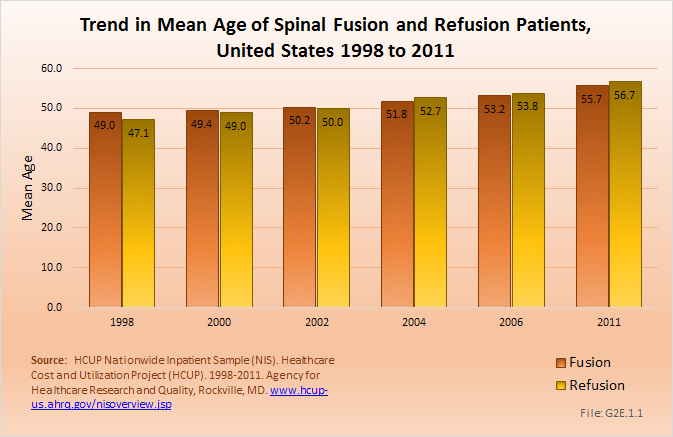
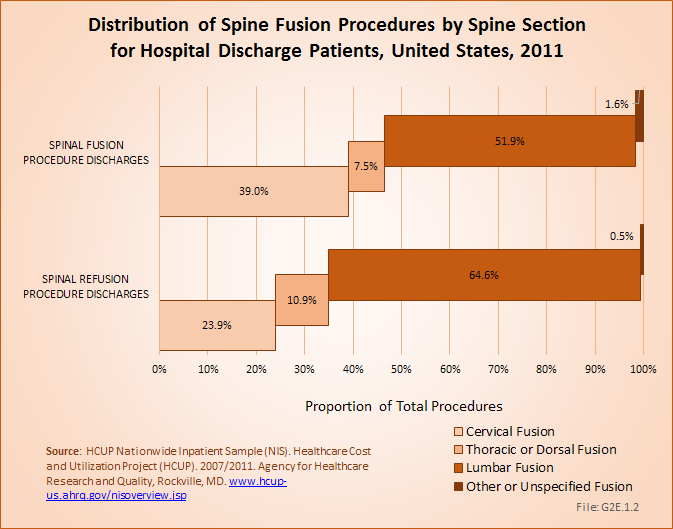
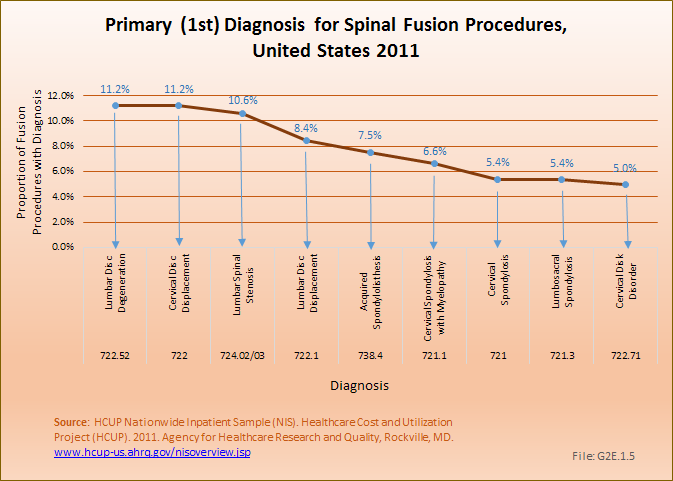

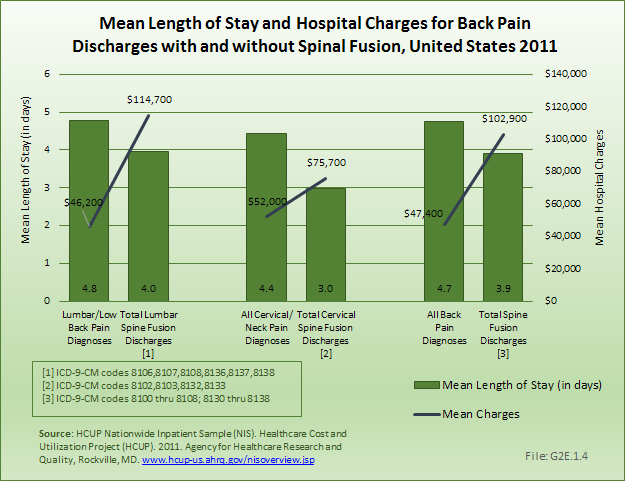
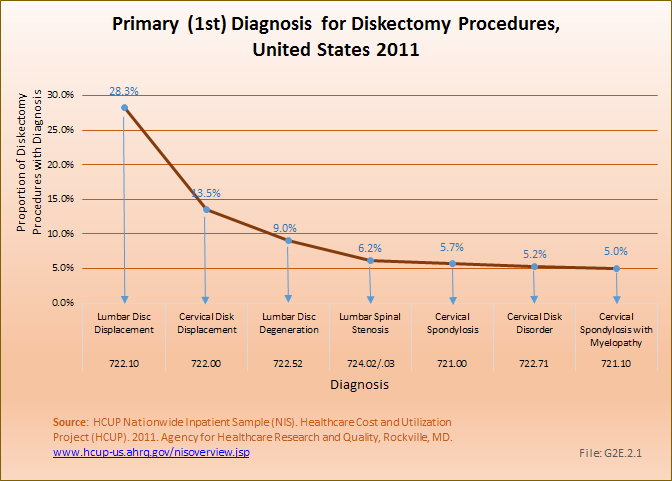
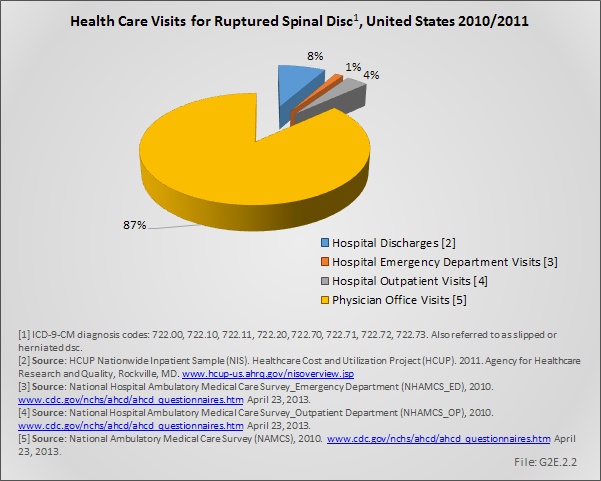
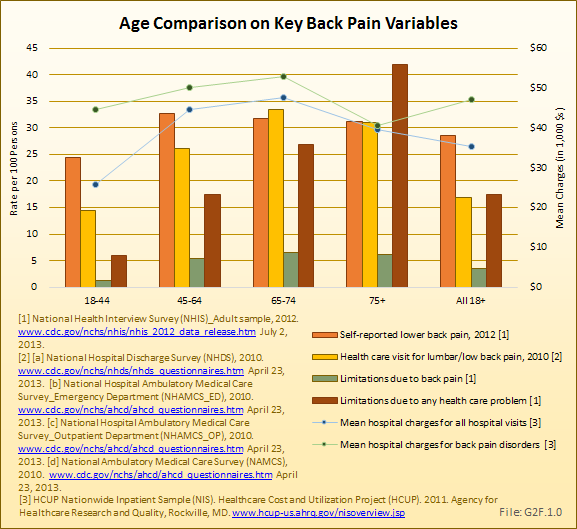
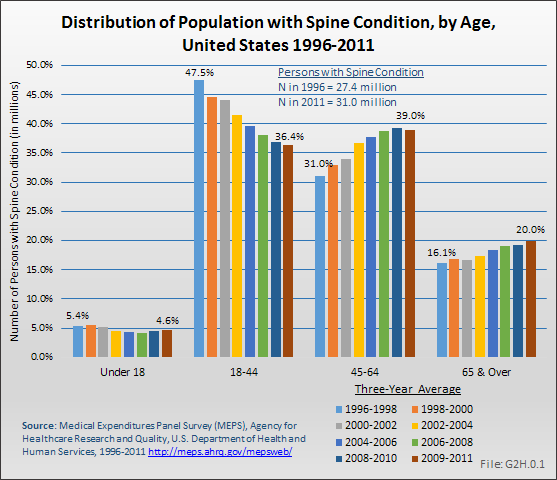
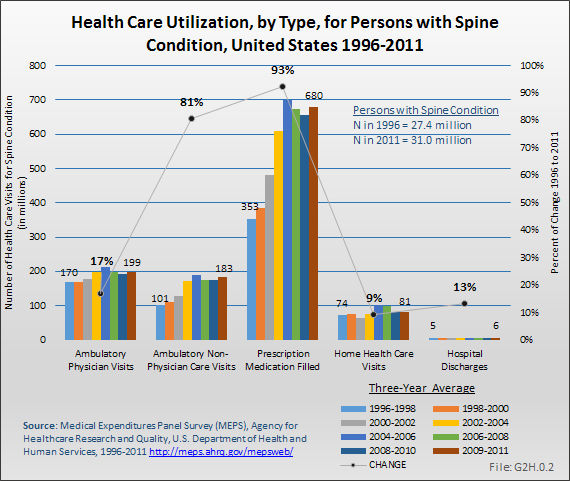
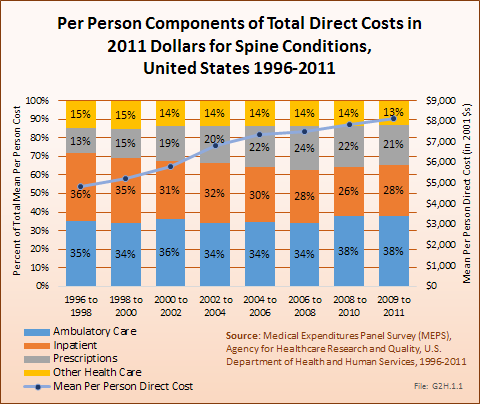
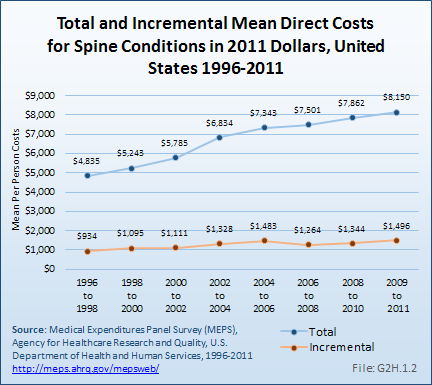
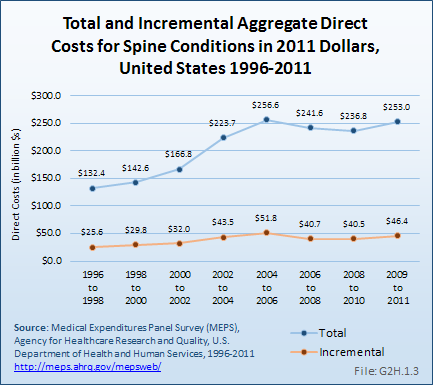
 Download as CSV
Download as CSV